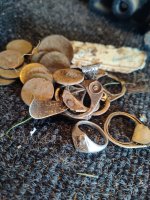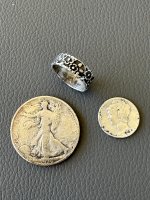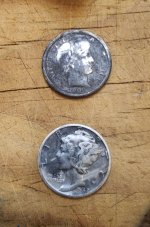cactusjumper
Gold Member
Thats what I have always wondered. How could prospectors walk around and just say, ( I think I will dig here, and then they come up with Gold, Silver, ect.)
No MDs, or test kits, ect.
Unless they found a vein.
RR,
One thing they would look for is sudden changes in the color/shade of plants, like on the side of a hill. Minerals in the ground have an effect on plants.
When panning a river or creek and finding gold, there is a method of following the placer back to the lode. It's like a pyramid, once you get to the top.......you dig.
Take care,
Joe


 . The references I've seen to it just have people calling it appropriately the Ore Cart Mine.
. The references I've seen to it just have people calling it appropriately the Ore Cart Mine.


